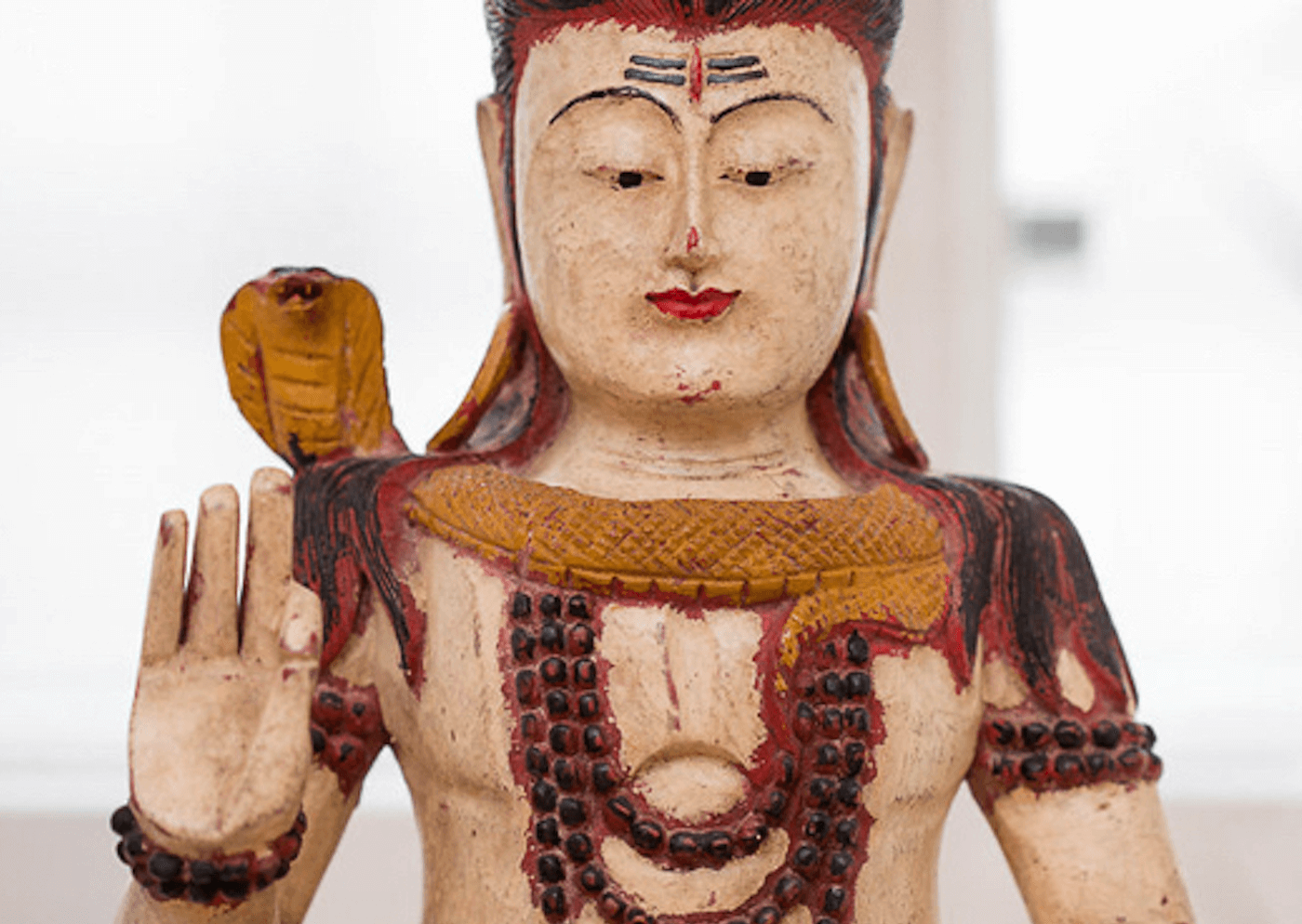So far this year we have been blessed by Ganesha, the remover of obstacles, and by Lakshmi, who teaches us to pass on what we have been given. This month we turn to another deity, who reflects different aspects of our lives. The god Shiva, depending on which tradition of Hinduism one looks at, is interpreted to have different meanings. Within the Trimurti, for example, Shiva is seen as the “destroyer of evil and the transformer”, and together with Brahma, the creator, and Vishnu, the sustainer, they form the Hindu trinity. Other schools recognize wider meanings of Shiva, so that there are in fact up to 108 different forms (and names) of this god. All these forms go back to Shiva in his highest form, which is actually formless, limitless and transcendent. As the formless, supreme Being he is often worshipped in his aniconic form of Lingam.
Now, how does Shiva as the Supreme Being and Shiva in his various forms relate to us and to our Yoga practice? From the understanding that Yoga is not just a physical exercise regime that makes us stronger, fitter, and more flexible, but that it is rather a practical system that can lead to Self-Realization, one could say that Shiva, in his formless form as the Supreme Being, represents the ultimate goal of Yoga.
One way to understand this goal is that Yoga is really about finding and uniting with the Ultimate Reality or the Ultimate Truth, and a basic assumption of Yoga Philosophy is that this Truth is never to be found in the world of material conditions (which includes our body and our mind) as this is forever subjected to change. If we honestly examine our own lives, we might see that life rarely follows a straight path, that many times things do not go according to plan, and that we ourselves just as everything around us, is in a constant state of change. In fact, nothing ever really stays still. Therefore, relying on external conditions to give us peace, satisfaction, and happiness can only be futile because we cannot rely on them. So, in Yoga we learn to look to a different source of stability. We start to look within, and over time we might find this seed of Truth that lies deep down in every one of us and while this Truth itself does not have a form but simply is, it manifests in various appearances in the external world.
Thus, it is that while Shiva is the Supreme and formless Being and so representing the Ultimate Truth, he can also appear in many different forms and each form is a representation of a part of this vast, limitless Truth that he is. With this, Shiva also often embodies what we would consider as opposing qualities. Yet in him they are united, indicating that nothing really exists on its own; you can’t have one without the other. So, for example, Shiva represent both the destroyer and the benefactor, or the ascetic and the householder. As Rudra, meaning “the wild one” or “the fierce god” he is known as a terrifying being with the power and will to destroy, while at the same time Siva also means auspicious or benign, reflecting his gentle attributes. As the first yogi, or “the great Yogi”, Mahayogi, Shiva represents the complete absorption into a state one oneness. Through his meditation he is completely established in his true self, which might be experienced when one withdraws from the worldly duties and is deeply immersed in the spiritual practice. Yet, at the same time, Shiva was also a family man and a householder, as the husband of Parvati and father of Ganesha and Kartikeya, thus fully partaking in normal, everyday life.
These two examples of Shiva’s representations serve as a great illustration of the fact that life is hardly ever just black or white, and either/or. The human existence is a complex web of opposing qualities and ideas all being able to co-exist at the same time. Perhaps it is when we surrender to the Truth that nothing in this world is either good or bad, right or wrong, light or dark, that we start to get a glimpse of what it could mean to realize the goal of Yoga, union. By starting to accept that two opposing attributes constitute the exact same thing and at the end always go back to one formless source, we are no longer torn back and forth between two polar points and may therefore find more serenity, peace, and evenness of mind.
Namaste!
by Carina Hilmar

